 March 10, 2022 John E. Ross, KD8IDJ, Editor
| ||||||||||||||||||
Axiom Private Astronaut Mission Crew Will Conduct ARISS School Contacts Amateur Radio on the International Space Station (ARISS-USA) has announced that two crew members scheduled to fly on Axiom Mission-1 (Ax-1) -- the first private astronaut mission to the International Space Station (ISS) -- will carry out amateur radio contacts with six schools while in space. The Ax-1 mission is currently set to launch from Florida on March 30 via a SpaceX Falcon 9 launcher, and the crew will spend 10 days in orbit on board the ISS. As part of the "Rakia" mission, Stibbe will use ARISS facilities on board the ISS to answer questions from middle school and high school students in Israel. Forty classes are expected to participate, and in the weeks preceding the launch, the students will learn a bit about the theory and practice of radio communication. Pathy, whose personal mission theme is "caring for people and the planet," will connect with elementary and high schoolers across Canada from the ISS. Pathy will answer student-developed questions that range from how his body has reacted to being in space to handling everyday tasks in zero gravity, as well as "thoughtful questions around the state of our planet." "The long-held dream of private missions to stations in space becomes a reality on Ax-1," said Frank Bauer, KA3HDO, Executive Director of ARISS-USA and Chair of ARISS International. "ARISS is proud to collaborate with Axiom Space, Mark Pathy, and Eytan Stibbe on this flight and support the Ax-1 crew members through amateur radio contacts that will inspire, engage, and educate school students in science, technology, engineering, arts, and math (STEAM) topics."
Mary Lynne Dittmar, Executive Vice President of Government Operations and Strategic Communications for Axiom Space, said, "For years, ARISS and its programs have inspired students across the globe to pursue interests in science, technology, engineering, and math, and we are pleased that Ax-1 will join the list of missions that have contributed to this important educational work." The Ax-1 mission includes an international crew of four, with Axiom's Michael López-Alegría, ex-KE5GTK, a former NASA astronaut and now an Axiom Vice President. López -Alegría will serve as mission commander. The fourth crew member, Larry Connor, will serve as the pilot. "The goal for the Ax-1 crew is to set a standard for all future private astronaut missions in terms of our preparation and professionalism," López-Alegría said in a NASA news release. Down the road, Axiom will build modules that will attach to the ISS. Axiom will fly its own Hub One space station in the future. Read an expanded version. ARRL Teachers Institute to Offer Four Sessions this Summer ARRL will offer four sessions of the Teachers Institute on Wireless Technology in June and July as part of its educational outreach to schools through the Education & Technology Program. The Teachers Institute (TI) is an expenses-paid professional development program intended to provide teachers with tools and strategies to introduce basic electronics, the science of radio, space technology and satellite communications, weather science, microcontrollers, robotics, and amateur radio to their students. The curriculum is designed for motivated teachers and other school staff who want to learn more "I invite you to apply and to share this incredible opportunity with schools and teachers," ARRL Education and Learning Manager Steve Goodgame, K5ATA, said. Goodgame said to contact him via email with any questions. Sessions this summer will be held in Newington, Connecticut, and in Dayton, Ohio. There are two levels -- TI-1 Introduction to Wireless Technology, and TI-2 Remote Sensing and Data Analysis. TI-1 is a prerequisite for TI-2. TI-2 focuses on the basic electronics of sensors (temperature, pressure, position, humidity, etc.), converting analog sensor data to a digital format, programming the microcontroller to read and interpret the data, and using radio to send the sensor data to the user. After learning the basics of remote sensing, teachers assemble a sensor package to collect environmental data remotely.
A 2022 brochure is available from the Teachers Institute on Wireless Technology web page. An explanatory video is also available. This in-service training program is supported entirely by generous philanthropic donations. Teachers Institute opportunities are virtually free for participants. The grant to attend a TI covers transportation, hotel, a modest per diem to cover meals, instructional resources for the electronics, microcontroller, and robotics segments of the course, and a resource library of relevant ARRL publications. The primary out-of-pocket expense is a $100 enrollment fee. Graduate credits are available through Fresno Pacific University upon completion of the TI-1 or TI-2 programs. Qualified applicants must be active teachers at an elementary, middle, high school or at a college or university, or in a leadership or enrichment instruction role in an after-school or collective homeschool program. An amateur radio license is not required for the introductory workshop (TI-1) but is required for the advanced TI-2 program. Read an expanded version. ARRL Podcasts Schedule
The latest edition (Episode 55) of the Eclectic Tech podcast will feature a conversation with Dave Slotter, W3DJS, about HamPi -- a free suite of The On the Air and Eclectic Tech podcasts are sponsored by Icom. Both podcasts are available on iTunes (iOS) and Stitcher (Android) as well as on Blubrry -- On the Air | Eclectic Tech. Annual Armed Forces Day Cross-Band Exercise Set for May 14 The 2022 running of the Armed Forces Day (AFD) Cross-Band exercise will be held on May 14, 1300 - 2200 UTC. A complete list of participating stations, modes, frequencies, times, and other details will be announced on April 1. The event is open to all radio amateurs. Armed Forces Day is May 21, but the AFD Cross-band Military-Amateur Radio event traditionally takes place 1 week earlier in order to avoid conflicting with Dayton Hamvention®. During the exercise, radio Military and amateur stations have taken part in this event for more than 50 years. It's an exercise scenario, designed to include ham radio and government radio operators alike. Per previous announcements: "The AFD Cross-band Test is a unique opportunity to test two-way communications between military communicators and radio stations in the Amateur Radio Service, as authorized in 47 CFR 97.111. These tests provide opportunities and challenges for radio operators to demonstrate individual technical skills in a tightly controlled exercise scenario that does not impact any public or private communications." Military stations in various locations will transmit on selected military frequencies and announce the specific ham band frequencies they are monitoring. An AFD message will be transmitted utilizing the Military Standard (MIL-STD) serial PSK waveform (M110) followed by MIL-STD Wide Shift FSK (850 Hz RTTY), as described in MIL-STD 188-110A/B. The AFD message will also be sent in CW and RTTY. Full details will be released on April 1. Amateur Radio in the News ARRL Public Information Officers, Coordinators, and many other member-volunteers help keep amateur radio and ARRL in the news.
Share any amateur radio media hits you spot with us. Volunteer Monitor Program Releases February 2022 Activity Report The Volunteer Monitor (VM) Program is a joint initiative between ARRL and the Federal Communications Commission (FCC) to enhance compliance in the Amateur Radio Service. This is the February 2022 activity report of the VM Program.
Technician-class operators in Auburn, Indiana; Crosby, Texas; Pierre, South Dakota; Chicago, Illinois, and Mojave, California, were issued Advisory Notices for FT8 operation on 7.074 MHz. Technicians have only CW privileges on 40 meters. General-class operators in Pittsburgh, Pennsylvania; Phoenix, Arizona, and Hephzibah, Georgia, were issued Advisory Notices for operation on 20-meter frequencies not authorized to General-class operators. The VM Program Administrator had two meetings with the FCC and participated in two amateur radio club meetings via videoconference. The final totals for VM monitoring during January 2022 were 2,172 hours on HF frequencies, and 2,932 hours on VHF frequencies and above, for a total of 5,104 hours. -- Volunteer Monitor Administrator Riley Hollingsworth, K4ZDH Successful Emergency Communications Exercise Carried Out on QO-100 Satellite On February 26, 22 stations representing 14 countries within IARU Region 1 took part in a short-notice exercise using the geostationary satellite QO-100. This was the first of a number of smaller exercises, tests, and meetings to be held by IARU Region 1 throughout the year, building on the earlier Global Simulated Emergency Tests to cover as many aspects of emergency communications as possible. The intention is to The exercise was deemed a success, with a number of formal messages passed among stations and some lessons learned from the inevitable challenges of equipment failure, language barriers and co-ordination of an exercise with a coverage area from South Africa to the United Kingdom. Once all the exercise feedback is received, another test on QO-100 is planned for October 2022. "QO-100 brings another asset to the emergency communications toolbox in Region 1, and its presence is much appreciated," IARU Region 1 Emergency Communications Coordinator Greg Mossop, G0DUB, commented. -- Thanks to IARU via Greg Mossop, G0DUB AMSAT Pioneer Ray Soifer, W2RS, SK Satellite pioneer Raphael "Ray" Soifer, W2RS, of Green Valley, Arizona, died on March 1. An ARRL member, he was 79. Licensed in 1955, Soifer was among those involved in founding the AMSAT organization. A native of New York City, he studied engineering at the Massachusetts Institute of Technology (MIT), and
then obtained an MBA at Harvard Business School. His career was in finance, serving as a news media banking commentator and banking analyst. As a 16-year-old at MIT, Soifer served as lead engineer in the AMSAT organization's satellite radio projects, including early ham satellite OSCAR-1. He was featured in Time magazine in 1960 for this work. Soifer has written many articles for QST, RadCom, The AMSAT Journal, and other ham publications, mostly about satellites and moonbounce. He holds Satellite DXCC No. 13 and Satellite Worked All Continents (WAC) No. 6, both earned entirely via low-Earth-orbit spacecraft. Soifer participated in the first two-way contact in any radio service via satellite-to-satellite relay, with W2BXA (SK) via AMSAT-OSCAR 7 and AMSAT-OSCAR 6 in 1975, as well as the first known contact via satellite ionization trail reflection, a propagation mode first reported by W8JK (SK) in 1958. He was active on 2-meter moonbounce from 1985 until 1995. Other call signs held over the years include K1WXC, K2QBW, WA4IJR, and G3DDU. Announcements
Study: Rapid Development of Satellite Mega-Constellations Risks Tragedies of the Commons A study reported in Nature, "Satellite mega-constellations create risks in Low Earth Orbit, the atmosphere and on Earth," in Scientific Reports (May 2021) by Aaron C. Boley and Michael Byers, says the rapid development of mega-constellations risks multiple tragedies of the commons. That could include tragedies to ground-based astronomy, Earth orbit, and Earth's upper atmosphere. The study asserts that international cooperation is urgently needed, along with a regulatory "[T]he connections between the Earth and space environments are inadequately taken into account by the adoption of a consumer electronic model applied to space assets," the authors said. "For example, we point out that satellite re-entries from the Starlink mega-constellation alone could deposit more aluminum into Earth's upper atmosphere than what is done through meteoroids; they could thus become the dominant source of high-altitude alumina." The authors say their study shows that untracked debris will lead to potentially dangerous on-orbit collisions on a regular basis due to the large number of satellites within mega-constellation orbital shells. The total cross-section of satellites in these constellations also greatly increases the risk of impacts due to meteoroids. De facto orbit occupation by single actors, inadequate regulatory frameworks, and the possibility of free-riding exacerbate these risks. According to Boley and Byers, in 2 years, the number of active and defunct satellites in low-Earth orbit (LEO) has increased by over 50%. "SpaceX alone is on track to add 11,000 more as it builds its Starlink mega-constellation and has already filed for permission for another 30,000 satellites with the [FCC]." More than 12,000 trackable debris pieces are already in low-Earth orbit, typically 10 centimeters in diameter or larger, the study asserts. Read an expanded version. The K7RA Solar Update Tad Cook, K7RA, Seattle, reports: We watched an active sun this week. Geomagnetic indicators peaked on Saturday, March 5, when Alaska's high latitude college A index reached 42. Again this week, sunspots covered the sun each day. Average daily sunspot numbers rose from 44 to 87.4, and average daily solar flux went from 98.5 to 115.5. Geomagnetic indicators were also higher. Average daily planetary A index increased from 7.3 to 11.4.
Predicted planetary A index is 12 on March 10 - 11; 5 on March 12 - 14; 8 on March 15 - 16; 5 and 8 on March 17 - 18; 12 on March 19 - 20; 15 on March 21; 7 on March 22 - 24; 5, 10, and 8 on March 25 - 27; 5 on March 28 - 29; 10, 12, 25, 20, and 10 on March 30 - April 3; 5 on April 4 - 6; 15, 20, and 12 on April 7 - 9, and 5 on April 10 - 13. Sunspot numbers for March 3 - 9 were 92, 77, 95, 82, 84, 93, and 89, with a mean of 87.4. The 10.7-centimeter flux was 110.9, 113.1, 120.1, 115.7, 118.3, 115.3, and 114.8, with a mean of 115.5. Estimated planetary A indices were 5, 10, 27, 18, 9, 6, and 5, with a mean of 11.4. Middle latitude A index was 3, 7, 19, 13, 7, 5, and 4, with a mean of 8.3. A comprehensive K7RA Solar Update is posted Fridays on the ARRL website. For more information concerning radio propagation, visit the ARRL Technical Information Service, read "What the Numbers Mean...," and check out the Propagation Page of Carl Luetzelschwab, K9LA A propagation bulletin archive is available. For customizable propagation charts, visit the VOACAP Online for Ham Radio website. Share your reports and observations. In Brief...
Just Ahead in Radiosport
Upcoming Section, State, and Division Conventions
Search the ARRL Hamfest and Convention Database to find events in your area. ARRL -- Your One-Stop Resource for
Subscribe to...
Free of charge to ARRL members...
| ||||||||||||||||||
.jpg) Ax-1 crew members Mark Pathy, KO4WFH, from Canada, and Eytan Stibbe, 4Z9SPC, from Israel, will carry out the contacts. ARISS has trained both crew members in the use of the ARISS radio system in the ISS Columbus module.
Ax-1 crew members Mark Pathy, KO4WFH, from Canada, and Eytan Stibbe, 4Z9SPC, from Israel, will carry out the contacts. ARISS has trained both crew members in the use of the ARISS radio system in the ISS Columbus module.
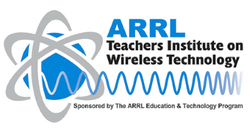 about wireless technology, gain hands-on experience, and bring that knowledge to their students. Class sizes are limited to 12. The deadline to apply is May 1, 2022.
about wireless technology, gain hands-on experience, and bring that knowledge to their students. Class sizes are limited to 12. The deadline to apply is May 1, 2022..jpg) The latest episode of the On the Air podcast (Episode 27) features a guided tour of 10 meters.
The latest episode of the On the Air podcast (Episode 27) features a guided tour of 10 meters..jpg) amateur radio software for the Raspberry Pi microcomputer.
amateur radio software for the Raspberry Pi microcomputer. amateurs listen for stations on military operating frequencies and transmit on frequencies in adjacent amateur bands.
amateurs listen for stations on military operating frequencies and transmit on frequencies in adjacent amateur bands.-2(1).jpg) Technician-class operators in North Attleborough, Massachusetts; Cedar Rapids, Iowa, and Broken Arrow, Oklahoma, were issued Advisory Notices for FT8 operation on 20 meters. Technician licensees have no privileges on 20 meters.
Technician-class operators in North Attleborough, Massachusetts; Cedar Rapids, Iowa, and Broken Arrow, Oklahoma, were issued Advisory Notices for FT8 operation on 20 meters. Technician licensees have no privileges on 20 meters.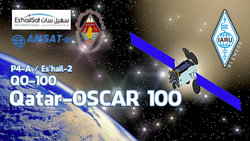 bring emergency communicators together more frequently to demonstrate how the Amateur Radio Service can work together as a global community and develop a common understanding of each others' capabilities.
bring emergency communicators together more frequently to demonstrate how the Amateur Radio Service can work together as a global community and develop a common understanding of each others' capabilities..jpg)
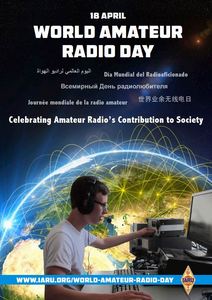 France's IARU member-society REF has announced that special event station TM97WARD will be among those on the air April 16 - 25 to celebrate World Amateur Radio Day (
France's IARU member-society REF has announced that special event station TM97WARD will be among those on the air April 16 - 25 to celebrate World Amateur Radio Day (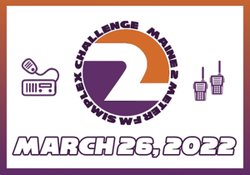 the IORS!
the IORS!.jpg) system that takes into account the effects of tens of thousands of satellites.
system that takes into account the effects of tens of thousands of satellites.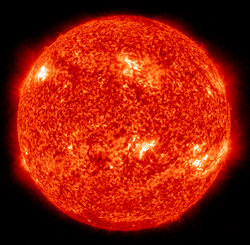 Predicted solar flux is 115 and 114 on March 10 - 11; 112 on March 12 - 14; 110 on March 15 - 16; 99 on March 17; 100 on March 18 - 21; 101 and 103 on March 22 - 23; 104 on March 24 - 27; 110, 115, and 116 on March 28 - 30; 118 on March 31 - April 1; 120 on April 2; 116 on April 3 - 4; 115 and 112 on April 5 - 6; 110 on April 7 - 9, and 108, 102, 98 and 99 on April 10 - 13.
Predicted solar flux is 115 and 114 on March 10 - 11; 112 on March 12 - 14; 110 on March 15 - 16; 99 on March 17; 100 on March 18 - 21; 101 and 103 on March 22 - 23; 104 on March 24 - 27; 110, 115, and 116 on March 28 - 30; 118 on March 31 - April 1; 120 on April 2; 116 on April 3 - 4; 115 and 112 on April 5 - 6; 110 on April 7 - 9, and 108, 102, 98 and 99 on April 10 - 13.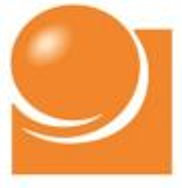 Japan's Ministry of Communications has established an advisory board that aims to encourage young people to become involved in amateur radio. Japan Amateur Radio League (
Japan's Ministry of Communications has established an advisory board that aims to encourage young people to become involved in amateur radio. Japan Amateur Radio League (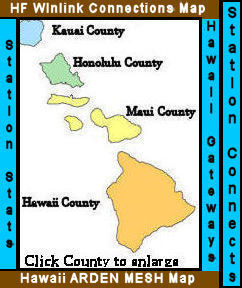 The "Heavenly Water Storm" Hawaii Amateur Radio Emergency Service® (
The "Heavenly Water Storm" Hawaii Amateur Radio Emergency Service® (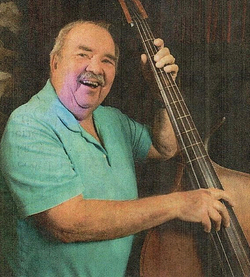 Past ARRL Eastern Washington Section Manager Kyle Pugh, KA7CSP, of Spokane, Washington, died on February 13. An ARRL member, he was 85. A professional musician and music educator, Pugh served as ARRL Eastern Washington Section Manager from 1992 until 2023. In addition to amateur radio, Pugh was a model railroad hobbyist. He was licensed in 1978 and remained active until his death.
Past ARRL Eastern Washington Section Manager Kyle Pugh, KA7CSP, of Spokane, Washington, died on February 13. An ARRL member, he was 85. A professional musician and music educator, Pugh served as ARRL Eastern Washington Section Manager from 1992 until 2023. In addition to amateur radio, Pugh was a model railroad hobbyist. He was licensed in 1978 and remained active until his death.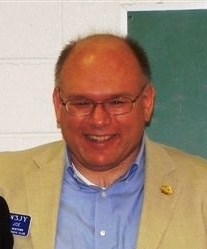 Former ARRL Eastern Pennsylvania Section Manager Joseph A. "Joe" Ames, W3JY, of Paoli, Pennsylvania, died on March 5. An ARRL Life Member, he was 57. Ames served as EPA SM from 2014 until 2016. He was one of the founders of Radio Relay International, an independent traffic-handling organization. A ham since 1977, Ames devoted many years to amateur radio public service organizations including Delaware County and Chester County ARES/RACES, and as an emergency communications instructor and Volunteer Examiner. He served as Section Traffic Manager in the 1980s, and was once president of the Carbon County Amateur Radio Club. He previously served the ARRL Field Organization with appointments as Assistant Section Manager in Eastern Pennsylvania, Official Emergency Station, and Official Relay Station. In 2015, he was elected as the Eastern Area Staff Chair of the ARRL National Traffic System, and net manager of the Eastern Pennsylvania Emergency Phone & Traffic Net. Ames was a member of the Quarter Century Wireless Association (QCWA). Read
Former ARRL Eastern Pennsylvania Section Manager Joseph A. "Joe" Ames, W3JY, of Paoli, Pennsylvania, died on March 5. An ARRL Life Member, he was 57. Ames served as EPA SM from 2014 until 2016. He was one of the founders of Radio Relay International, an independent traffic-handling organization. A ham since 1977, Ames devoted many years to amateur radio public service organizations including Delaware County and Chester County ARES/RACES, and as an emergency communications instructor and Volunteer Examiner. He served as Section Traffic Manager in the 1980s, and was once president of the Carbon County Amateur Radio Club. He previously served the ARRL Field Organization with appointments as Assistant Section Manager in Eastern Pennsylvania, Official Emergency Station, and Official Relay Station. In 2015, he was elected as the Eastern Area Staff Chair of the ARRL National Traffic System, and net manager of the Eastern Pennsylvania Emergency Phone & Traffic Net. Ames was a member of the Quarter Century Wireless Association (QCWA). Read 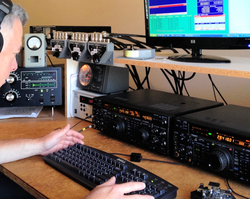 March 13 -- UBA Spring Contest, 2 Meters (CW, phone)
March 13 -- UBA Spring Contest, 2 Meters (CW, phone)







